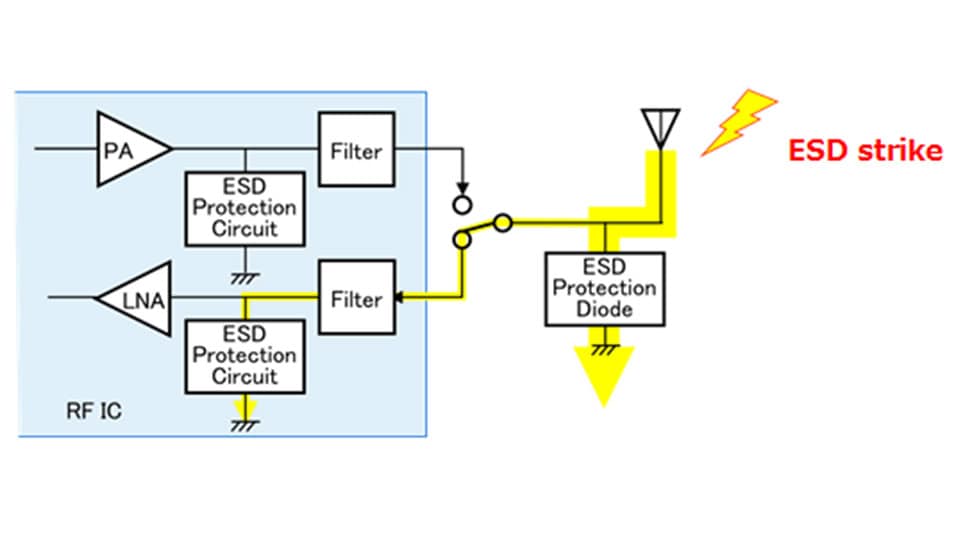- 半導體首頁
-
應用Automotive
Body Electronics
xEV
In-Vehicle Infotainment
Advanced Driver-Assistance Systems (ADAS)
Chassis
IndustrialInfrastructure
BEMS/HEMS
Factory Automation
Commercial Equipment
Consumer/PersonalIoT Equipment
Healthcare
Wearable Device
Mobile
Computer Peripherals
-
產品車用元件
Discrete Semiconductor
Diodes
電晶體
通用邏輯IC
Analog Devices
Digital Devices
Wireless Devices
※
: Products list (parametric search)
功率半導體※
: Products list (parametric search)
隔離器/固態繼電器Photocouplers
Digital Isolators
※
: Products list (parametric search)
MOSFETsIGBTs/IEGTs雙極性電晶體※
: Products list (parametric search)
Diodes※
: Products list (parametric search)
微控制器馬達驅動 ICs智能功率 ICs※
: Products list (parametric search)
電源管理 ICs線性 ICs※
: Products list (parametric search)
通用邏輯 ICs線性影像感測器其他產品其他產品
※
: Products list (parametric search)
-
開發/設計支援
開發 / 設計支援
-
技術知識
- 購買管道
- 型號 & 關鍵字搜尋
- 交叉搜尋
- 參數搜尋
- 線上庫存查詢跟購買
This webpage doesn't work with Internet Explorer. Please use the latest version of Google Chrome, Microsoft Edge, Mozilla Firefox or Safari.
型號需要超過三個文字以上 Search for multiple part numbers fromhere.
The information presented in this cross reference is based on TOSHIBA's selection criteria and should be treated as a suggestion only. Please carefully review the latest versions of all relevant information on the TOSHIBA products, including without limitation data sheets and validate all operating parameters of the TOSHIBA products to ensure that the suggested TOSHIBA products are truly compatible with your design and application.Please note that this cross reference is based on TOSHIBA's estimate of compatibility with other manufacturers' products, based on other manufacturers' published data, at the time the data was collected.TOSHIBA is not responsible for any incorrect or incomplete information. Information is subject to change at any time without notice.
型號需要超過三個文字以上
ESD Protection for Wi-Fi® Antennas and Other RF Applications

As smartphones, tablets, point-of-sale (POS) terminals, and other mobile devices become ever more prevalent, they are becoming increasingly exposed to electrostatic discharge (ESD) from a charged human body or object, making them more vulnerable to permanent damage or deterioration. There are two types of ESD strikes: 1) contact discharge caused by contact with an exposed connector and 2) air discharge that produces an electric spark, invading an antenna or internal loop wiring. It is necessary to protect mobile devices from these ESD events. Nowadays, it has become the norm to test the ESD tolerance of exposed leads and add ESD protection as necessary.
Therefore, these circuits are sometimes not protected against ESD. An antenna is connected to radio-frequency (RF) ICs and other sensitive devices. Although the RF IC shown in Figure 1 incorporates ESD protection circuits, they typically provide an ESD tolerance of less than 1 kV HBM (human body model). Although this ESD protection level is sufficient in manufacturing and other ESD-controlled environments, it does not suffice for environments in which mobile devices are generally used. Proper ESD protection must be considered not only for the ESD protection diode alone, but also for the entire system, including the ESD protection circuitry incorporated in the RF IC.
This application note provides an answer to one of the frequently asked questions about the considerations required for the selection of ESD protection diodes.
ESD enters an electronic system from an antenna and might damage or degrade an RF circuit. In particular, RF front-end ICs such as global positioning system (GPS) receivers are fabricated using a nanoscale process in order to satisfy system requirements. ICs with smaller geometries are less tolerant of ESD.
Receive-only antenna systems for GPS and FM radios generally handle micro-power signals whereas Wi-Fi® and other transceiver antennas transmit high-power signals in transmit mode. However, the requirements for ESD tolerance and high-power signal transmission are contradictory. The following sections describe the considerations for the ESD protection of RF transceiver antenna lines from three perspectives:
* Wi-Fi is a registered trademark of Wi-Fi Alliance.
* Other company names, product names, and service names may be trademarks of their respective companies.

